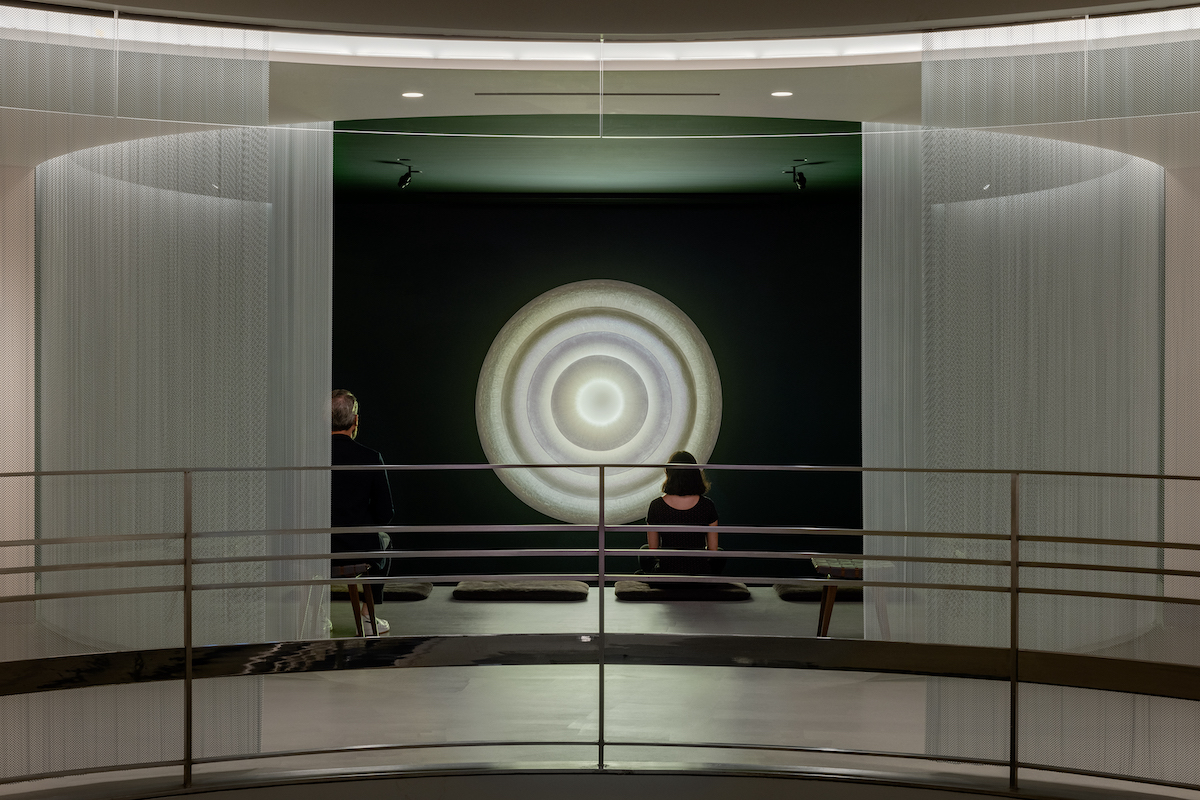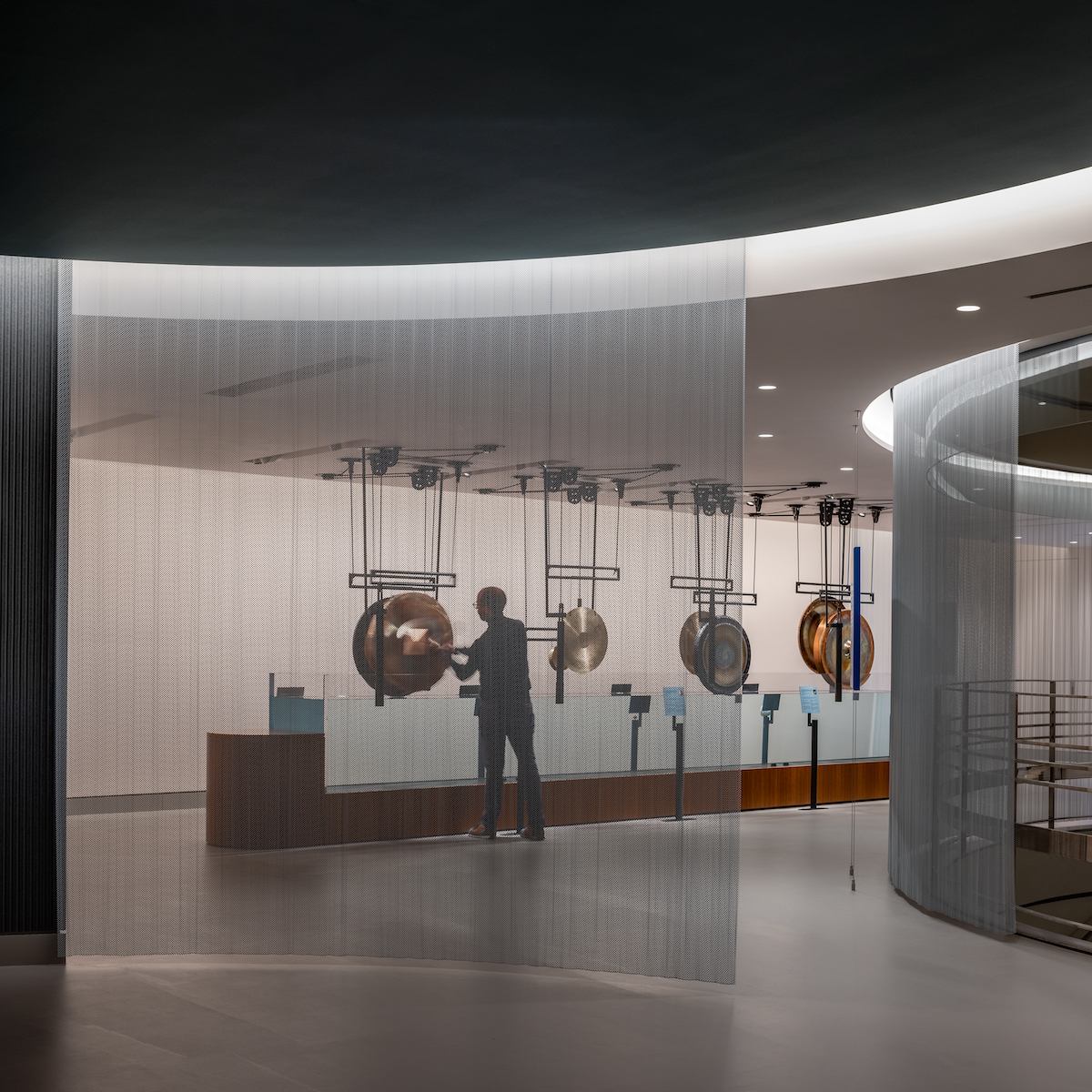In response to the emotional strife brought about by the pandemic and economic depression, the Rubin Museum has transformed its entire third floor into a space for social and emotional learning. The Mandala Lab will teach visitors how to channel energy into coping with turbulent times through contemplation, meditation, and other Buddhist practices. Designed by Peterson Rich Office architects Miriam Peterson and Nathan Rich, the lab draws influences from the mandala—a spiritual symbol that appears in more than 100 pieces at the museum, which highlights art and artifacts from the Himalayas.
The Mandala Lab will offer five sensory experiences, each imparting resources and wisdom on addressing emotions known as kleshas in Buddhism—pride, attachment, envy, anger, and ignorance—that cloud our understanding of the world. “In Buddhism, the five kleshas are the key afflictive emotional responses that are the root cause of our suffering. Tantric Buddhist practitioners use mandalas as visualization aids to help transform these emotions,” says Tenzin Gelek, the museum’s senior specialist of Himalayan Arts and Culture. “At the Mandala Lab, we’re using Buddhist wisdoms coupled with creative and interactive artworks and experiences to understand, unlock, and heal these difficult emotions within ourselves.”
These include a scent and memory library with contributions by master perfumer Christophe Laudamiel and synchronized breathing activities with a newly commissioned pulsing light sculpture by Palden Weinreb to a gong orchestra curated by global musicians. “Visitors will be invited to smell, see, touch, and listen as they sense, interpret, and process their own thoughts and emotions, using the Mandala Lab as a lens for healing,” Rubin Museum executive director Jorrit Britschgi says. Each experience was created in consultation with cognitive scientists, Buddhist teachers, and contemplative humanities researchers. Creating a dedicated space for emotional wellbeing feels like a natural evolution for the Rubin, which has lately prioritized mindfulness with year-long programming around the Buddhist theme of “the art of awakening.”

